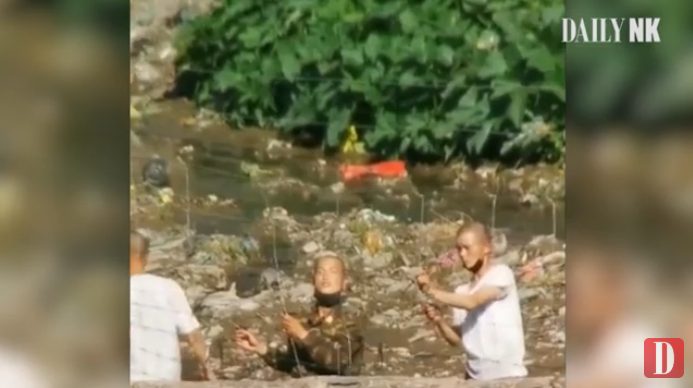
Human Rights Watch (HRW), an international NGO advocating for human rights, has published the results of its initial analysis of satellite images of the North Korean border taken before and after the COVID-19 pandemic. The group’s analysis found that North Korea has reinforced and expanded barbed wire, guard posts and patrol roads in the border region since the outbreak of COVID-19.
On Nov. 17, HRW published on its website a comparison of North Korea’s border security facilities before and after the pandemic based on an analysis of satellite imagery of about 300 km of the border, which runs for a total length of 1,300 km.
“Preliminary analysis indicates that, since early 2020, the authorities have constructed new primary fences in several areas, set up secondary layers of fencing, upgraded preexisting primary fences, improved or widened patrol paths, and built new garrisons, watchtowers and guard posts along the border,” HRW said.
HRW focused on satellite imagery of a 7.4 km stretch of the border near Hoeryong, a North Korean city on the banks of the Tumen River, opposite China’s Jilin Province.
“In 2019 [prior to the pandemic], the area around [Hoeryong] was already almost fully fenced and had five watch towers. Images taken in April 2022 show that, since then, authorities have built another 169 guard posts, 9.2 kilometers of new secondary fencing, and 9.5 kilometers of improved primary fencing,” HRW said.
HRW posted satellite images of the area around Hoeryong that were taken in March 2019 and April 2022 to its website so that readers could intuitively see how more fences and guard posts had been built since the outbreak of COVID-19.
“[Hoeryong] already had tight security before the pandemic started, built along the reconstructed riverbank,” HRW said, but observed that “the river’s relatively shallow depth facilitated illegal crossings, smuggling and unofficial trade, particularly following the collapse of the state-run economy in the 1990s.
“Five North Korean former traders and smugglers who worked in [Hoeryong] city and two former government officials who left after 2013 said that security in [Hoeryong] increased after Kim Jong Un came to power in 2011, and that by 2013, many small-scale traders had been forced to stop smuggling.
“Three organizations that previously helped North Koreans flee the country told Human Rights Watch in recent months that new border controls have made their work impossible since 2020. Five North Korean escapees involved in smuggling goods in and out of North Korea said that since February 2020, they have been unable to smuggle any products at all. The five escapees said that out of 10 money brokers they knew who had been sending money into the country previously, only one was still able to do so.
“The North Korean government has substantially increased security along its northern border, using COVID-19 as the justification, further restricting travel and trade,” HRW said.
“The increased border security has almost entirely stopped unauthorized cross-border economic activity, which has contributed to severe shortages of food, medicine and other necessities. They have also greatly reduced attempts by North Koreans to seek asylum abroad, violating the right to freedom of movement,” the NGO added.
Lina Yoon, a senior Korea researcher for HRW, said, “The North Korean government used purported COVID-19 measures to further repress and endanger the North Korean people. The government should redirect its energies to improving access to food, vaccines and medicine, and respecting freedom of movement and other rights.”
HRW plans to release the results of a comprehensive analysis of satellite imagery of other areas along North Korea’s northern border early next year.
Please direct any comments or questions about this article to dailynkenglish@uni-media.net.

















